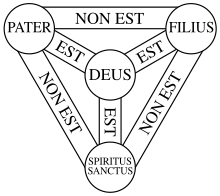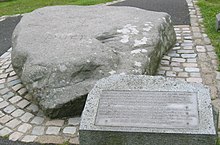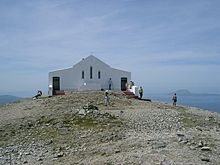 |
| Dwight Stone, Flickr |
5 Things You’re Reading When You’re Reading The Bible
http://www.patheos.com/blogs/formerlyfundie/the-things-youre-reading-when-youre-reading-the-bible/
by Dr. Benjamin L. Corey
March 13, 2017
I love the Bible.
It’s why I spent eight years of my life in seminary, why I’ve served as a church pastor even when they couldn’t afford to pay me, and is why even now I end up finding Greek flashcards in the most random places in my house.
But my love for the Bible includes honesty.
When we love someone or something, it’s easy to grow to see them the way you want to see them in your mind, often overlooking obvious realities that, if acknowledged, would create more work for the relationship. I did that for many years with the Bible, but now my love for it includes a willingness to embrace it for all it is– and to be honest about that.
In my years of studying, wrestling, and growing to love the Bible deeper and more honestly, I’ve come to embrace and acknowledge that when we read the words on the page, we’re reading a lot more than just those words. So, here’s 5 things we’re reading, when we’re reading the Bible:
5. You’re reading books and letters where the primary/original meaning is what the author intended the original audience to understand.
I remember learning in Sunday School that the Bible was “God’s love letter to us.” It’s a cute idea, but is less than helpful because we’re not the original audience, and that matters.
The reality is that these are sacred books, stories, and letters, where the primary/original meaning is the meaning the original author intended to convey to the original audience - and we’re neither of those parties. It’s almost like trying to understand an inside joke; until you understand the relationship between the sender and receiver of a message, and the context of what’s being discussed, it’s easy to walk away with all sorts of broken understandings of what was really being communicated. This makes things like understanding ancient culture, customs, and general history, a critical aspect of understanding the Bible.
4. You’re reading an unfolding story of people slowly growing in their understanding of God.
For those of us who grow up in conservative traditions, we’re often taught that the nature and character of God is perfectly revealed on every page of Scripture, but that’s not actually true.
The Bible, while a collection of books spanning centuries, is ultimately an unfolding story of people trying to understand what God is like. There are glimpses of God revealed throughout the story, as well as misunderstandings about God, and even blaming horrid actions on God - but the revelation of God is a progressive revelation. The entire narrative builds towards the introduction of a main character– Jesus– who is God made flesh and reveals that the nature and character of God has often been profoundly misunderstood.
The giant twist of the story was the realization that the only way to know what God is like, is to look at what Jesus is like– everything else gets reinterpreted in light of God made flesh.
3. You’re reading the judgment call, and even bias, of a translator.
Translation may involve the same part of your brain as math, but it’s not *exact* like math. The reality is that when translating ancient manuscripts into modern language, there are words and expressions that do not have a 1 for 1 swap. You also find words that could have meant many different things in the original language, and without the ability to ask the original author which meaning they meant or which meaning the original audience most likely would have understood, you’re left with no choice but to make your best guess– and that best guess can radically change the flavor of any given passage.
Other times there is outright bias on the part of the translator to the point where they will deliberately translate something in a way that is more favorable to their opinion or position. Either way, when you read the Bible you’re already reading someone else’s best guess, or someone else’s bias.
2. You’re reading nuance in English that does not exist in Greek.
Translation isn’t just a challenge from Greek or Hebrew into English, but also brings up reverse issues: words in English that carry flavors, associations, and nuance, that would not have existed in the original language. When this happens, we are subtly led to read things into Scripture without even knowing we’re doing it– unconsciously assuming that modern or English nuance actually applies to the text.
A great example of this is the word “hell.” The NT uses three completely different words that we translate into English as hell, even though all three Greek words have different nuance– none of them being the equivalent to what we think about when we see the English word, hell. Our version of the word didn’t exist in the first century, so using the English word “hell” causes us to read a modern understanding into an ancient text, wrongly.
1. You’re reading your own beliefs, assumptions, and generational theology.
Every time you pick up a Bible, you’re reading not just words on a page but are also reading previously held beliefs and assumptions into the text. This is a version of confirmation bias, which essentially is an unwillingness (often subconscious) to have your cherished view be shaken by additional facts or information, and is a *really* hard habit to break.
If your childhood was spent being taught that X was true, when you read the Bible you’ll read it in such a way that assumes X is true. When you encounter a passage that contradicts or challenges X, you’ll naturally look for alternative ways to understand the passage so that it lines up with your unwillingness to consider that X may not be true after all.
- Believe violence against enemies is ok? You’ll read that into the Bible.
- Taught that God is full of wrath, that there’s a great tribulation about to come upon us, and that the end is here? You’ll read that into the Bible, too.
That’s because it’s natural to bring our own beliefs and assumptions to the party with us, and to read the Bible in such a way that makes it conform to the view we already hold– we all do it, we just have to learn to be aware that we’re doing it.
---
I grew up in the world where people had bumper stickers that said, “The Bible says it, I believe it, that settles it,” but it’s really not that simple. The Bible is a complex collection of writings. There are translation issues, narrative issues, nuance of language issues, and the human tendency to make something conform to a previously held belief.
I think we need to be honest about that, and allow that to invite us into a posture of humility when reading the Bible.
I still love the Bible every bit as much as I loved it back then, but I love it with more honesty now– even though it creates a lot more work for the relationship.























